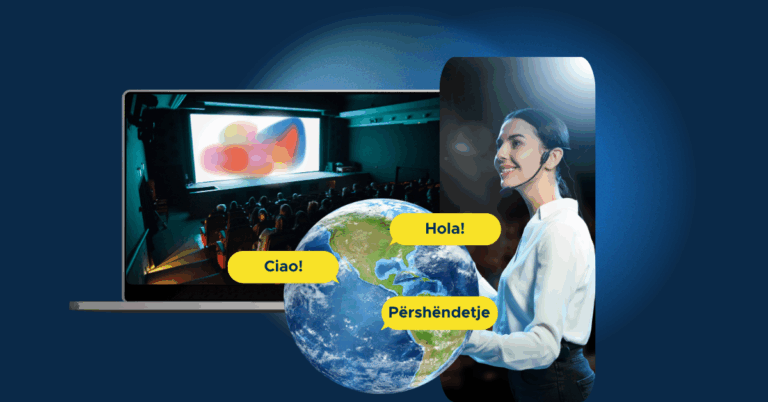In This Blog Post
Why Choosing the Right Language Service Provider Matters
Choosing a new language services provider can feel like a gamble. Every change means retraining staff, adjusting systems, and relying on a partner you may not fully know yet. If that choice doesn’t pay off, you’ve wasted time and money and exposed your organization to compliance risks under ADA and Title VI.
And it’s not just your team that’s depending on you to make the right call. The provider you choose can impact whether patients can understand and follow their care plans, whether families can participate fully in their child’s education, or whether customers have confidence in doing business with you.
But with so many options out there, how do you choose the right one?
This guide highlights the most important factors to weigh when evaluating providers — along with practical questions that help you make the right choice with confidence.
1. Language Coverage: The Languages You Need, When You Need Them
It’s not just the number of languages they support, it’s whether they support the right languages for your organization.
The first step in choosing a provider is making sure the people you serve will always have reliable access.
The US is the fifth most linguistically diverse country in the world. In larger communities, it’s common to find dozens of languages spoken side by side — sometimes far more. That makes it essential to work with a provider who offers comprehensive coverage for even less common languages.
But that’s only part of the picture. Those services also need to be accessible when you need them, and fast. A long list doesn’t help much if your most requested languages are slow to connect or if rare languages are nearly impossible to access.
Questions to ask providers:
- How many languages do you support, and which ones are most in demand in my region?
- How quickly can you connect us to an interpreter in our top-requested languages?
- What’s your process for sourcing rare or limited-diffusion languages?
- Do you provide American Sign Language (ASL) and other services for Deaf and Hard-of-Hearing communities?
What we offer:
At LSA, we provide services in 300 languages, from high-demand languages like Spanish, ASL, Mandarin, Arabic, and Vietnamese to less common languages that many providers struggle to cover. For urgent requests, interpreters in top languages are available within seconds thanks to LSA’s extensive interpreter network and dedicated call flows. For less common languages or those of limited diffusion, LSA we use strategies like relay interpretation services, scheduled calls, and, when necessary, country-of-origin pairing for language identification.
LSA also supports rare languages that other providers struggle to offer, and offers AI services to address gaps when a live interpreter may not be available at the time you need assistance.
Accessibility is also a core part of our coverage. We provide:
- ASL interpretation onsite and via video remote interpretation, available 24/7/365.
- Certified Deaf Interpreter (CDI) services, including interpreting for individuals who use shorthand phrases or are still learning ASL.
- DeafBlind Tactile interpretation to ensure communication for people with combined vision and hearing loss.
Pictured above: LSA’s ASL interpreter at the Tampa Bay Sun Game.
2. Services and Modalities: Support That Fits the Way You Work
Flexible, customizable, and comprehensive.
Language access needs can look very different from one situation to the next. You might need a quick over the phone interpreter for a call center, a scheduled onsite interpreter for a legal proceeding, video interpretation for a hospital emergency room, or AI-assisted translation to handle large volumes of content. The right provider should be able to cover all of these without forcing you to juggle multiple vendors.
Questions to ask providers:
- Do you offer onsite, phone, video, and AI interpretation?
- Can your services integrate with our existing systems (like EHRs, CRMs, or call centers)?
- How do you handle urgent requests versus scheduled needs?
- Do you also provide translation, dubbing, or localization when required?
What we offer:
We provide interpretation by phone, video, and onsite, as well as translation and localization for written and digital content. For organizations with high-volume needs, we also offer AI-enabled options like AI Machine Translation+ and AI Video Translation & Dubbing, always combined with human oversight to protect quality.
All of these services are designed to integrate smoothly into your existing workflows, whether that’s connecting with EHR systems in healthcare, CRMs in business, or administrative platforms in government and education.
3. Interpreter and Translator Quality: Experience, Training, and Expertise
Credentials, training, and experience matter.
Highly qualified professionals are crucial, especially in healthcare, legal, and government settings.
Mistakes can have legal, financial, or even life-altering consequences. That’s why you can’t replace a professional interpreter or translator with an untrained bilingual friend, family member or coworker. And that’s why it’s worth digging into how a provider selects, trains, and supports its linguists.
Questions to ask providers:
- How do you vet interpreters and translators before bringing them on?
- Do they have specialized training in my industry’s terminology and regulations?
- What kind of ongoing education or quality checks are in place?
- How do you measure cultural competency in addition to language skills?
What we offer:
Our linguists go through a three-step verification process that includes a credential review, live screening, and formal knowledge and skills testing. Candidates are also evaluated on specialized concepts, terminology, ethics, and regulatory compliance for each sector. Only one in 40 candidates meets LSA’s strict requirements.
To keep standards high, interpreters and translators complete ongoing training in:
- Industry-specific terminology (medical, legal, and more)
- Ethical practices and confidentiality
- Cultural competence and clear communication
- Annual compliance requirements, including HIPAA and CMS in healthcare settings
- Specific training topics include security awareness, handling electronic Protected Health Information (ePHI), and reporting abuse and neglect.
This combination of selective hiring and continuous education helps ensure accuracy, professionalism, and trust in every interaction.
4. AI vs. Human Expertise: Finding the Right Balance
AI can make language services faster and more affordable— but nothing can replace human accuracy.
Relying on AI alone (or using it improperly) creates real risks.
If your provider leans too heavily on AI, important details can get lost. A machine translation that misses cultural nuance may confuse customers, or an AI interpreter that struggles with medical terminology can leave a patient uncertain about their care. But if your provider avoids this technology altogether, you’re not getting the best possible service. And you may face higher costs, longer wait times, and difficulty scaling support as a result.
The challenge is finding a provider that knows when technology is enough — and when only a human expert will do.
Questions to ask providers:
- How have you integrated AI into your language services? How does this benefit your clients?
- How easy is it to move from an AI interaction to a live interpreter if the situation requires it?
- What safeguards are in place to ensure accuracy, confidentiality, and compliance?
What we offer:
LSA strikes the perfect balance between the speed of AI and the accuracy and judgment of experienced linguists. Our proven approach combines advanced AI-driven solutions with more than three decades of expertise in human interpretation.
Our AI services are designed to expand access and lower costs while keeping humans in the loop where it matters most:
- AI interpretation: real-time language support with the ability to switch instantly to a live interpreter if the conversation becomes complex or sensitive.
- AI translation: fast, cost-effective translation for high-volume text, always paired with human editors for accuracy, tone, and compliance.
- AI video translation and dubbing: scalable solutions for multimedia content, refined by linguists to protect clarity and context.
By integrating these tools with our network of professional interpreters and translators, we give you the flexibility to choose the right mix of speed, scale, and human expertise for every situation.
5. Availability and Uptime for Help: Help When you Need It
In critical situations, downtime isn’t an option.
Language barriers don’t keep office hours. Look for 24/7 access to services across phone, video, and onsite interpretation.
The need for an interpreter can come up in the middle of the night, on weekends, or during a crisis when every minute matters. If your provider isn’t available around the clock — or if their systems go down — your staff is left without critical support and the people you serve are left waiting.
Questions to ask providers:
- Do you offer 24/7/365 access across phone, video, and onsite interpretation?
- What’s your average wait time for connecting to an interpreter?
- How reliable are your systems, and what’s your documented uptime?
What we offer:
Our interpretation and translation services are available 24/7/365 — nights, weekends, and holidays included. You can connect to interpreters by phone, video, or onsite whenever the need arises. And with an uptime of 99.9%+ across our platforms, you can count on reliable access even during emergencies or large-scale outages.
6. Compliant and Secure Translation and Interpretation Services
Confidentiality protects everyone.
Make sure your provider complies with all relevant standards for your industry.
When you’re handling medical records, legal documents, or government communications, confidentiality isn’t negotiable. If your provider can’t demonstrate full compliance with the laws and standards that govern your industry, you could face fines, reputational damage, or even legal consequences. That makes security and regulatory compliance one of the most important factors to evaluate.
Questions to ask providers:
- Are your services compliant with HIPAA, HITECH, and other relevant regulations for your sector?
- Do you provide ongoing compliance training for interpreters and staff?
- How do you secure data in transit and at rest?
- Which certifications or third-party audits can you provide?
What we offer:
We follow a comprehensive compliance and information security program that covers federal, state, local, and client-specific requirements. Our safeguards include administrative, technical, and physical controls to protect sensitive data. Key frameworks include:
- Healthcare compliance: HIPAA, HITECH, CMS regulations
- Data protection and privacy: GDPR, CCPA, ISO 27001
- Federal and government standards: FEDRAMP, PCI DSS, UK G-Cloud, CMS Fraud Waste and Abuse, Conflicts of Interest, Anti-Kickback Statute, False Claims Act, GSA requirements
- Security measures: encryption of data in transit and at rest, written policies and procedures, regular audits, and mandatory annual training for interpreters and staff
With these safeguards in place, you can be confident that your provider isn’t just offering language access — they’re protecting the privacy and security of the people you serve.
7. Customer Support and Account Management: Care You Can Count On
The right partner offers more than just a service. They offer reliable service.
Look for dedicated account managers, fast onboarding, and customized solutions.
You need more than just a number to call for an interpreter, or a portal for translation requests. You need a team that understands your industry, anticipates challenges, and helps you get the most out of your language access program. Without that support, small issues can turn into bigger problems, confusion, or wasted time.
Questions to ask providers:
- Will I have a dedicated account manager who knows my industry?
- What does onboarding look like, and how much support will my team receive?
- Who do I contact if I have questions or urgent needs?
- How do you adapt your solutions as my organization changes?
What we offer:
Every client is paired with a dedicated account manager who understands their field and goals. We provide an onboarding process that gets you up and running quickly, with minimal disruption. From there, our account managers and Client Experience team help you navigate the full range of services — onsite, video, phone, AI-enabled, ASL, and more — and guide you in choosing the right mix for your needs. We also support technology integrations, such as connecting with EMR/EHR systems, so language access fits smoothly into the way your organization already works.
8. Scalability and Adaptability: Growing with your Organization
Your needs may change — can your provider keep up?
Look for customizable solutions for organizations of all sizes.
Language access needs rarely stay the same for long. A sudden influx of refugees may introduce new languages into your community. Expanding into a new market can add demand across multiple regions. Even within a single organization, the volume of requests can swing dramatically from one month to the next. If your provider can’t adapt quickly, you’re left scrambling to fill gaps or absorbing unnecessary costs.
Questions to ask providers:
- How do you handle sudden increases in volume or demand for new languages?
- Can your services scale for organizations of different sizes, from small offices to enterprise-level operations?
- Do you have the infrastructure and interpreter network to support growth without sacrificing quality or speed?
- How do you customize services to the needs of different industries?
What we offer:
We work with organizations of all sizes — from small community clinics to Fortune 500 companies — and scale services up or down as needs change.
Our network of more than 7,000 interpreters covers nearly 300 languages, giving you the flexibility to handle both high-demand and rare requests. Beyond volume, we adapt to different industries by integrating with healthcare EHR systems, supporting call centers in utilities and finance, and providing education-specific solutions for schools and universities.
Making the Choice with Confidence
Choosing a language services provider isn’t about chasing the lowest price or the flashiest promises. It’s about finding a company you can trust to support your staff, meet compliance requirements, and help the people you serve feel understood. By weighing these factors and asking the right questions, you’ll be better equipped to separate the marketing talk from what truly matters — and make a decision with confidence.
At Language Services Associates (LSA), we’ve been doing exactly that for over three decades — helping organizations connect authentically and effectively with people in any language. If you’re ready to evaluate your options, let’s talk about your goals and how we can design a solution that fits.
Contact us today to learn how we can support your language access goals.


